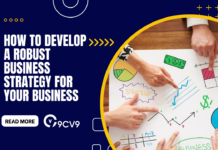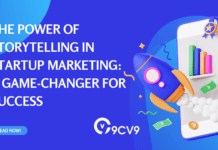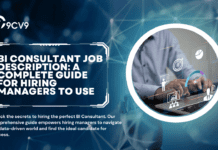Key Takeaways
- Conversational marketing platforms use AI-powered chat to deliver real-time, personalized customer interactions across multiple digital channels.
- These platforms help businesses automate lead generation, boost engagement, and improve customer support efficiency.
- Integrating with CRM and marketing tools, they streamline the buyer journey and increase conversion rates through contextual conversations.
In today’s fast-paced digital economy, where attention spans are shrinking and customers expect instant, personalized interactions, traditional marketing methods are no longer enough to keep up. Businesses are under increasing pressure to deliver real-time engagement, meaningful conversations, and seamless experiences across multiple digital channels. This is where conversational marketing platforms come into play—a cutting-edge solution that transforms how companies interact with their audiences by enabling dynamic, two-way conversations that drive conversions, build relationships, and enhance customer satisfaction.

A conversational marketing platform is not just another marketing tool; it is a strategic approach that leverages technologies like AI-powered chatbots, live messaging, and automation to create personalized, context-aware customer journeys. Unlike conventional marketing tactics that rely heavily on static forms, delayed follow-ups, and one-size-fits-all email campaigns, conversational marketing empowers brands to engage with customers in real time, responding to their queries, offering product recommendations, and guiding them through the sales funnel with speed and precision.
The growing adoption of conversational marketing is closely tied to changes in consumer behavior. Modern buyers want to be heard, understood, and helped—immediately. They are increasingly gravitating toward brands that provide quick, human-like interactions without the hassle of waiting in queues or navigating complex websites. Conversational marketing platforms are designed to meet these expectations by integrating real-time chat tools, smart automation, and personalized workflows into every stage of the customer journey—from lead generation and qualification to nurturing and conversion.
As businesses across industries—from eCommerce and SaaS to healthcare and finance—recognize the value of instant communication, the demand for conversational marketing platforms has surged. These platforms serve as a centralized solution for handling everything from website chat and social media messaging to CRM integration and automated follow-ups, ensuring that no lead is left behind and every conversation moves the customer closer to a decision.
Moreover, the rise of Artificial Intelligence (AI) and Natural Language Processing (NLP) has significantly enhanced the capabilities of conversational marketing tools. Advanced AI-driven chatbots can now interpret user intent, answer complex queries, and even adapt their responses based on past interactions—creating a user experience that is not only faster but also smarter. This level of personalization and efficiency is crucial for businesses looking to differentiate themselves in a highly competitive digital landscape.
In this comprehensive guide, we will delve deep into what a conversational marketing platform is, how it works, and why it has become an indispensable tool for modern marketers. You will learn about its core components, practical benefits, key features, real-world use cases, and how to choose the right solution for your business. Whether you are a marketing professional exploring new ways to boost engagement or a business owner aiming to streamline customer communications, understanding conversational marketing platforms is essential for staying ahead in today’s experience-driven market.
By the end of this article, you’ll not only have a clear understanding of how these platforms function but also why they are reshaping the future of digital marketing—one conversation at a time.
Before we venture further into this article, we would like to share who we are and what we do.
About 9cv9
9cv9 is a business tech startup based in Singapore and Asia, with a strong presence all over the world.
With over nine years of startup and business experience, and being highly involved in connecting with thousands of companies and startups, the 9cv9 team has listed some important learning points in this overview of What is a Conversational Marketing Platform and How It Works.
If your company needs recruitment and headhunting services to hire top-quality employees, you can use 9cv9 headhunting and recruitment services to hire top talents and candidates. Find out more here, or send over an email to [email protected].
Or just post 1 free job posting here at 9cv9 Hiring Portal in under 10 minutes.
What is a Conversational Marketing Platform and How It Works
- What is a Conversational Marketing Platform?
- How Does a Conversational Marketing Platform Work?
- Key Features of a Conversational Marketing Platform
- Benefits of Using a Conversational Marketing Platform
- Real-World Use Cases of Conversational Marketing Platforms
- Top Industries Leveraging Conversational Marketing
- How to Choose the Right Conversational Marketing Platform
- Challenges and Limitations
- Future Trends in Conversational Marketing Platforms
1. What is a Conversational Marketing Platform?
A conversational marketing platform is a digital tool or software ecosystem designed to facilitate two-way, real-time communication between businesses and their customers. These platforms use technologies such as AI chatbots, live chat, natural language processing (NLP), and automation workflows to personalize the customer experience, accelerate sales cycles, and increase engagement across channels like websites, messaging apps, and social media.
Core Definition and Objective
- A conversational marketing platform enables interactive, real-time dialogues with users instead of traditional one-way promotional messaging.
- It aims to replace static forms, delayed responses, and generic messaging with instant, personalized conversations that guide users through the buying journey.
- These platforms are often integrated with CRM, marketing automation, sales enablement, and analytics toolsto deliver a seamless user experience and track performance.
Key Characteristics of a Conversational Marketing Platform
- Real-time engagement
Enables instant communication with website visitors or social media users to reduce drop-off rates. - AI-powered interactions
Uses natural language processing (NLP) and machine learning to understand user intent and deliver intelligent responses. - Multi-channel accessibility
Connects with customers via web chat, WhatsApp, Facebook Messenger, SMS, and other platforms simultaneously. - Lead qualification automation
Identifies and routes leads to appropriate sales teams or nurtures them through automated workflows. - CRM integration
Syncs conversations and collected data into CRM systems like Salesforce or HubSpot for unified customer profiles.
How It Differs from Traditional Marketing Tools
| Feature | Traditional Marketing Platforms | Conversational Marketing Platforms |
|---|---|---|
| Communication Style | One-way messaging | Two-way, interactive conversations |
| Response Time | Delayed | Instant/real-time |
| Personalization | Limited | High, based on real-time data |
| User Experience | Form-based | Chat-based, dynamic |
| Conversion Speed | Slower | Accelerated |
| Channels | Emails, ads, landing pages | Web chat, social messaging, voice |
Core Technologies Behind Conversational Marketing Platforms
- AI Chatbots
- Can simulate human-like conversations.
- Handle repetitive tasks such as answering FAQs, product inquiries, and booking demos.
- Example: Drift’s AI chatbot that qualifies leads and schedules meetings.
- Live Chat Integration
- Provides the ability to escalate to human agents when needed.
- Combines automated routing with real-time human support.
- Natural Language Processing (NLP)
- Analyzes user intent and sentiment.
- Helps create context-aware responses that improve customer satisfaction.
- Conversational Flows and Automation
- Offers logic-driven conversation paths to guide users through the buyer’s journey.
- Automates follow-ups, lead nurturing, and cross-channel handovers.
- Analytics and Customer Insights
- Tracks user behavior, chat outcomes, and engagement rates.
- Enables continuous optimization of conversation strategies.
Popular Examples of Conversational Marketing Platforms
| Platform | Key Features | Ideal Use Case |
|---|---|---|
| Drift | AI chatbot, sales routing, live chat, ABM targeting | B2B lead qualification and meeting booking |
| Intercom | Conversational support, custom bots, product tours | SaaS onboarding and user retention |
| HubSpot Chat | Free chatbot builder, CRM integration, knowledge base linking | Small to mid-sized business automation |
| Tidio | Multichannel chat, AI suggestions, eCommerce-focused tools | Shopify and WooCommerce live chat |
| Freshchat | AI bots, rich media support, multichannel inbox | Enterprise support and user engagement |
Benefits of Using a Conversational Marketing Platform
- Faster Lead Conversion
- Speeds up the qualification and routing of high-intent users.
- Reduces delays caused by manual follow-ups or form submissions.
- Improved Customer Engagement
- Keeps users engaged by offering relevant assistance in real time.
- Helps reduce bounce rates on websites and landing pages.
- Increased Personalization
- Tailors responses based on behavior, demographics, and user data.
- Enhances brand loyalty and trust.
- Scalable Interactions
- Handles thousands of conversations simultaneously without increasing headcount.
- Ideal for high-traffic websites and growing customer bases.
Visual Representation: Conversational Marketing Platform Workflow
Website Visitor → Chat Triggered → AI Bot Engages →
Data Collected & Qualified → CRM Sync → Lead Routed →
Sales/Support Follows Up → Conversion or Nurture Workflow
Who Should Use a Conversational Marketing Platform?
- eCommerce businesses
- Recommend products, offer discounts, and recover abandoned carts in real time.
- B2B companies
- Automate lead capture, qualification, and meeting scheduling for sales teams.
- SaaS providers
- Guide users through product features, answer queries, and reduce churn.
- Customer support teams
- Streamline ticket resolution and FAQs with AI bots before involving human agents.
2. How Does a Conversational Marketing Platform Work?
A conversational marketing platform functions as an intelligent, real-time communication engine that engages website visitors or users across messaging channels, qualifies their intent, and seamlessly guides them through the marketing and sales funnel. It replaces outdated, static lead capture processes with dynamic, AI-driven conversations that deliver immediate value to both businesses and prospects.
The working process of a conversational marketing platform can be broken down into several distinct but interconnected stages, each powered by automation, artificial intelligence, and data integration.
1. Visitor Entry and Conversation Trigger
- Entry Point Activation
- Users arrive on a digital channel such as a website, landing page, or messaging app.
- The conversational interface (e.g., chatbot widget) is triggered based on defined behaviors:
- Time spent on page
- Scroll depth
- Exit intent
- UTM parameters (from campaigns)
- Personalized Greeting Message
- Dynamic messages are displayed based on user context (location, referral source, browsing behavior).
- Example: “Hi there! Looking for help with pricing or features?” on a pricing page.
- Trigger Types
- Manual (user clicks chat icon)
- Automatic (pre-set time delay or behavior-based)
2. Intelligent Engagement and Qualification
- Conversational Routing Based on Intent
- The platform uses Natural Language Processing (NLP) to understand what the user is looking for.
- Smart prompts guide users through a logical path—product info, demo booking, support, etc.
- Lead Qualification
- Key qualifying questions are asked conversationally:
- “What industry are you in?”
- “What’s your company size?”
- “When do you plan to buy?”
- Responses help segment the lead in real time.
- Key qualifying questions are asked conversationally:
- Example Use Case
- A B2B SaaS company like Drift qualifies leads through automated flows and instantly routes qualified buyers to the sales team.
3. Automated Data Capture and Integration
- Seamless CRM and Marketing Tool Integration
- Data from conversations (name, email, company, answers) is synced with platforms like:
- HubSpot
- Salesforce
- Marketo
- Mailchimp
- Data from conversations (name, email, company, answers) is synced with platforms like:
- Real-Time Lead Scoring
- Leads are scored based on intent and engagement.
- Example: A user who visits 3+ pricing-related pages and answers qualification questions positively is assigned a high lead score.
- Behavioral Tracking
- Tracks user interactions across touchpoints to enrich the CRM with behavioral insights.
4. Intelligent Routing and Human Handoff
- Smart Routing Rules
- Based on user answers, leads are assigned to:
- Specific sales reps (by region, account size, vertical)
- Human agents for support
- Nurturing sequences if not sales-ready
- Based on user answers, leads are assigned to:
- Live Chat Escalation
- AI bots seamlessly escalate to live agents when:
- Questions are complex
- Users request human help
- Pre-defined fallback conditions are met
- AI bots seamlessly escalate to live agents when:
- Real-Time Notifications
- Sales reps receive instant alerts via Slack, email, or CRM for hot leads.
5. Ongoing Engagement and Lead Nurturing
- Email and Chat Follow-Ups
- Post-conversation follow-ups are sent via email, SMS, or messenger.
- Examples:
- “Thanks for chatting. Here’s the demo link you requested.”
- “Let’s finish booking your free consultation.”
- Nurturing Workflows
- Leads that are not yet ready to convert are enrolled in automated workflows based on their conversation responses and behavior.
- Personalized Content Delivery
- Tailored content recommendations (blogs, case studies, webinars) based on lead profile and interest.
6. Conversion, Handoff, or Customer Support Resolution
- Meeting Booking
- Platforms often integrate with calendar tools like Calendly or Google Calendar to allow:
- One-click demo scheduling
- Consultation appointments
- Platforms often integrate with calendar tools like Calendly or Google Calendar to allow:
- Purchase Flow
- For eCommerce or product-based businesses, bots assist in:
- Product selection
- Checkout navigation
- Cart recovery
- For eCommerce or product-based businesses, bots assist in:
- Support Ticket Resolution
- Customer queries are resolved through:
- FAQ knowledge base integration
- Instant answers
- Escalation to support reps if needed
- Customer queries are resolved through:
7. Analytics, Optimization, and Performance Tracking
- Key Metrics Tracked
- Conversation volume
- Average response time
- Qualified leads generated
- Conversion rates
- Bot vs. human handoff frequency
- A/B Testing and Flow Optimization
- Platforms allow testing of various conversation scripts.
- Continuous improvement based on engagement trends.
- ROI Tracking
- Maps conversations to pipeline stages and revenue generation.
Visual Workflow Chart: How a Conversational Marketing Platform Works
Website/Mobile Visitor
↓
Smart Chat Widget is Triggered
↓
AI Bot Greets & Asks Questions
↓
Intent Analysis & Lead Qualification
↓
CRM Sync + Lead Scoring + Routing
↓ ↓
Not Ready Sales Qualified
↓ ↓
Nurturing Flow Meeting Booking
↓ ↓
Re-Engagement Sales Follow-up
Example Table: How Leading Platforms Handle Workflow
| Platform | Visitor Trigger | Qualification | Human Handoff | Calendar Booking | CRM Integration |
|---|---|---|---|---|---|
| Drift | Scroll-depth, UTM | Industry, Budget | Yes | Yes | Salesforce, HubSpot |
| Intercom | Time on site | Company size | Yes | Yes | Custom CRM, Mailchimp |
| HubSpot Chat | Button click | Page interest | Yes | Yes | Native CRM |
| Tidio | Product views | eCommerce needs | Yes | No | Shopify, WooCommerce |
| Freshchat | Geo & source | Use case | Yes | Yes | Zoho, Zendesk |
Real-World Example: Drift for B2B Marketing
- Company: B2B software firm with high-value deals.
- Problem: Form abandonment and long sales cycles.
- Solution: Deployed Drift to greet users, qualify leads, and book meetings directly via chatbot.
- Results:
- 40% increase in qualified leads
- 70% reduction in form abandonment
- Sales cycle reduced by 33%
A conversational marketing platform functions as a smart, automated, and interactive engine that guides users from interest to action in real time. It replaces static processes with dynamic dialogues, making every customer interaction faster, more personal, and more profitable. In the next section, we’ll explore the key features that make these platforms essential to modern marketing success.
3. Key Features of a Conversational Marketing Platform
A robust conversational marketing platform is built with advanced features that allow businesses to engage, qualify, nurture, and convert leads in real-time. These features are strategically designed to create seamless, personalized, and interactive customer journeys while improving operational efficiency across sales, marketing, and support functions.
Below is an in-depth exploration of the core features that define and differentiate high-performing conversational marketing platforms in the modern digital landscape.
1. AI-Powered Chatbots and Natural Language Processing (NLP)
- Automated Engagement
- AI chatbots initiate conversations automatically based on visitor behavior or triggers.
- Example: A bot pops up when a user lingers on a pricing page, asking, “Do you need help with choosing a plan?”
- Natural Language Understanding
- Uses NLP and machine learning to understand intent, sentiment, and user queries.
- Supports multiple languages and conversational variations.
- Contextual Memory
- Remembers past interactions to deliver a consistent experience across sessions.
- 24/7 Availability
- Bots provide around-the-clock support without increasing headcount.
- Example Tool: Intercom’s Resolution Bot intelligently answers questions and learns from repeated interactions to improve accuracy over time.
2. Live Chat and Human Handoff
- Real-Time Conversations with Agents
- Offers seamless transition from bot to live human agents when complex or sensitive queries arise.
- Ensures smooth escalation with full conversation history.
- Agent Routing Rules
- Assigns chats based on agent expertise, region, or account ownership.
- Co-Browsing and File Sharing
- Allows agents to co-navigate websites with customers and exchange documents in real time.
- Example Tool: Tidio allows both automated and live chat options with proactive triggers and agent takeover.
3. Lead Qualification and Segmentation
- Conversational Lead Scoring
- Scores leads based on real-time responses during conversations (e.g., company size, buying timeline).
- Filters out unqualified traffic early in the funnel.
- Customizable Qualification Flows
- Allows marketing teams to set rules that mirror their sales pipeline.
- Lead Segmentation
- Categorizes leads into custom buckets (hot, warm, cold) for tailored nurturing or handoff.
- Example Tool: Drift enables dynamic routing and prioritization based on firmographic and behavioral data collected during conversations.
4. CRM and Marketing Automation Integration
- Real-Time Data Sync
- Pushes data directly into CRMs such as Salesforce, HubSpot, or Zoho.
- Ensures every conversation is recorded and attributed to the correct contact or deal.
- Two-Way Sync
- Updates conversation context based on existing CRM data to tailor responses.
- Workflow Triggers
- Initiates email campaigns, lead scoring, or notifications based on chat activity.
- Example Tool: HubSpot Conversations integrates natively with its CRM to keep records updated and sales teams aligned.
5. Omni-Channel Messaging Support
- Unified Inbox
- Centralizes all conversations from web chat, Facebook Messenger, WhatsApp, SMS, and more into a single dashboard.
- Consistent Customer Experience
- Maintains context across platforms, ensuring the same conversation can continue regardless of channel.
- Cross-Channel Automation
- Automates replies and sequences across multiple messaging platforms.
- Example Tool: Freshchat enables consistent messaging across WhatsApp, Apple Business Chat, and websites in a single thread.
6. Custom Conversation Flows and Templates
- Drag-and-Drop Flow Builders
- Create conversational logic without coding knowledge.
- Pre-Built Templates
- Ready-to-use flows for lead gen, product recommendations, and customer support.
- Conditional Branching
- Customizes conversation paths based on real-time user input.
- Example Tool: Landbot provides a visual builder for designing chatbot flows that match your brand’s voice and logic.
7. Calendar and Meeting Scheduling
- Integrated Booking Tools
- Syncs with tools like Calendly, Google Calendar, and Outlook to book demos or calls instantly.
- Time-Zone Recognition
- Automatically adjusts available slots based on user location.
- Meeting Reminders
- Sends reminders to both users and sales reps to reduce no-shows.
- Example Tool: Drift Meetings allows users to book time with sales reps without leaving the chat window.
8. Analytics and Performance Tracking
- Conversation Metrics
- Tracks number of conversations, average duration, resolution rate, and conversion rate.
- Sales Attribution
- Maps chat conversations to revenue generated and opportunities created.
- Bot Performance Reports
- Evaluates success rates of automation, fallback usage, and engagement drop-off points.
- Example Tool: Zoho SalesIQ offers heatmaps and visitor behavior tracking along with detailed bot analytics.
9. Personalization and Behavioral Targeting
- Dynamic Chat Content
- Changes messages based on visitor journey, referral source, and page content.
- Returning Visitor Recognition
- Custom greetings for repeat users based on previous interactions.
- Contextual Targeting
- Offers promotions or support based on user actions such as cart abandonment or product page views.
- Example Tool: LivePerson customizes chat experiences based on user persona, device type, and location.
10. Security, Compliance, and Data Privacy
- End-to-End Encryption
- Ensures secure data exchange between users and platforms.
- GDPR and CCPA Compliance
- Offers consent pop-ups, data access, and deletion options.
- Access Controls and User Roles
- Restricts platform functionality based on team roles.
- Example Tool: Acquire.io includes enterprise-grade security with customizable permissions and data compliance features.
Comparison Table: Feature Availability in Leading Platforms
| Feature | Drift | Intercom | HubSpot Chat | Freshchat | Tidio |
|---|---|---|---|---|---|
| AI Chatbot with NLP | Yes | Yes | Moderate | Yes | Yes |
| Live Chat with Human Handoff | Yes | Yes | Yes | Yes | Yes |
| CRM Integration | Yes | Yes | Native | Yes | Yes |
| Omni-Channel Messaging | Limited | Yes | No | Yes | Yes |
| Meeting Scheduling | Yes | Yes | Yes | No | No |
| Drag-and-Drop Flow Builder | Yes | Yes | Moderate | Yes | Yes |
| Analytics Dashboard | Yes | Yes | Yes | Yes | Yes |
| Behavioral Targeting | Yes | Yes | Moderate | Yes | Limited |
| GDPR Compliance Features | Yes | Yes | Yes | Yes | Yes |
Feature Adoption Chart: Most Requested Features in 2024
| Feature | Adoption Rate (%) |
|----------------------------------|-------------------|
| AI Chatbots & NLP | 93% |
| Live Chat | 87% |
| CRM Integration | 82% |
| Meeting Scheduling | 76% |
| Omni-Channel Messaging | 71% |
| Behavioral Targeting | 69% |
| Performance Analytics | 68% |
| Custom Flow Builder | 64% |
Source: 2024 Conversational Marketing Benchmark Report
The above features collectively define the versatility and power of a modern conversational marketing platform. Whether you’re focused on generating leads, closing deals faster, or providing real-time support, these capabilities enable your business to scale personalized conversations across every digital touchpoint.
In the following section, we’ll explore the benefits of using a conversational marketing platform, including performance improvements and real-world ROI impact.
4. Benefits of Using a Conversational Marketing Platform
Implementing a conversational marketing platform provides businesses with a competitive edge in a digital-first world where customer experience, personalization, and instant communication are critical to conversion and retention. By enabling real-time, AI-powered, and human-assisted conversations, these platforms improve the overall customer journey while driving measurable results in lead generation, sales acceleration, and brand loyalty.
Below is a comprehensive breakdown of the most impactful benefits businesses can achieve with conversational marketing platforms.
1. Real-Time Customer Engagement
- Instant Responses Improve User Experience
- Engaging customers the moment they land on a site or app significantly reduces bounce rates and increases time on site.
- Example: A SaaS website using a chatbot to offer product tour links as soon as a user visits the features page.
- 24/7 Availability Across Time Zones
- Platforms operate round-the-clock, ensuring users can get help or information even outside of business hours.
- Reduces Friction in the Buyer Journey
- Eliminates the need to search through FAQs or wait for email replies, thereby speeding up decision-making.
2. Increased Lead Conversion Rates
- Shorter Sales Cycles
- Conversational bots qualify leads in real-time and immediately hand them off to sales reps, cutting the time from interest to conversion.
- Example: Drift users report 30–50% reduction in their average sales cycle.
- Instant Demo Bookings and Calendar Integration
- Seamless scheduling removes back-and-forth emails, leading to higher conversion of interested prospects.
- Context-Aware Follow-Ups
- Follow-up messages are tailored to each user’s previous conversation, increasing conversion chances.
3. Enhanced Personalization at Scale
- Data-Driven Custom Interactions
- Bots collect data such as location, browsing behavior, and previous visits to tailor conversations in real time.
- User Segmentation for Targeted Messaging
- Creates personalized experiences for different customer segments, such as first-time visitors or high-intent returnees.
- Hyper-Relevant Recommendations
- Suggests content, products, or services based on user responses and behaviors.
- Example: An eCommerce brand using Tidio to show personalized product suggestions saw a 25% boost in average order value.
4. Improved Lead Qualification and Sales Efficiency
- Automated Qualification Workflows
- Chatbots ask qualifying questions and sort leads into categories: sales-ready, nurture, or disqualified.
- Immediate Sales Routing
- High-intent leads are routed to appropriate reps or departments instantly.
- Reduces Manual Work for Sales Teams
- Sales teams can focus on closing instead of manually qualifying leads.
5. Seamless CRM and Tech Stack Integration
- Centralized Data Sync
- Integrates with popular CRMs like Salesforce, HubSpot, and Zoho to sync contact data and conversations automatically.
- End-to-End Visibility
- Ensures sales and marketing teams have full context about user interactions across channels.
- Trigger-Based Automation
- Sends leads into workflows based on their conversation behavior.
6. Scalable Customer Support Operations
- Deflection of Low-Level Queries
- Automates responses to FAQs, reducing the load on human support agents.
- Smooth Handover to Support Teams
- Complex issues are escalated to human reps without losing chat history or user data.
- Cost-Effective Scaling
- Supports growing traffic and queries without proportional increase in customer service costs.
7. Higher Customer Retention and Satisfaction
- Faster Issue Resolution
- Customers receive answers and assistance in seconds, improving satisfaction and loyalty.
- Proactive Engagement
- Bots can re-engage users who are idle, show exit intent, or spend time on support pages.
- Builds Trust Through Immediate Help
- Human-like and empathetic interactions leave a positive impression, fostering long-term relationships.
8. Detailed Analytics and Performance Insights
- Comprehensive Reporting Dashboards
- Tracks engagement, conversion, and drop-off metrics across channels.
- Bot Performance Optimization
- Identifies which scripts or flows perform best and where users abandon conversations.
- Revenue Attribution
- Connects conversational engagement to pipeline stages and closed deals.
Real-World Examples of Measurable Impact
| Company | Use Case | Results Achieved |
|---|---|---|
| Drift (B2B SaaS) | Lead qualification & demo booking | 30% increase in qualified meetings booked |
| Tidio (eCommerce) | Cart abandonment & product recommendation | 25% increase in average order value |
| Intercom (SaaS) | Customer support automation | 40% reduction in support ticket volume |
| HubSpot | Lead routing & sales engagement | 70% faster response time on inbound leads |
Before vs. After: Impact of Conversational Marketing
| KPI | Before Platform Use | After Platform Implementation |
|---|---|---|
| Lead Response Time | 12–24 hours | Under 1 minute |
| Lead-to-Demo Conversion | 4–6% | 15–25% |
| Support Ticket Volume | 100% handled by humans | 40–60% handled by chatbots |
| Customer Satisfaction Score | 7.2/10 | 9.1/10 |
Graph: Benefits Distribution by Business Objective
| Benefit Area | % of Businesses Reporting Improvement |
|----------------------------|----------------------------------------|
| Lead Conversion Rate | 84% |
| Customer Satisfaction | 78% |
| Sales Cycle Reduction | 65% |
| Support Cost Optimization | 59% |
| Personalization Efficiency | 72% |
Source: 2024 Conversational Marketing Trends Survey
Why Businesses Across Industries Are Adopting Conversational Marketing
| Industry | Use Case Example | Outcome |
|---|---|---|
| eCommerce | Personalized shopping assistant | Higher AOV, lower cart abandonment |
| SaaS | Demo booking and onboarding | Faster sales pipeline movement |
| Healthcare | Patient intake and appointment scheduling | Improved accessibility and care delivery |
| Real Estate | Property matching and viewing bookings | More engaged, qualified leads |
| Financial Services | Investment recommendations and FAQs | Higher trust and account openings |
A conversational marketing platform empowers organizations to move away from static, reactive marketing to proactive, real-time engagement strategies. From boosting lead conversion to reducing operational costs and improving customer loyalty, the benefits of adopting this technology are far-reaching and measurable across industries.
In the next section, we’ll explore the real-world use cases of conversational marketing platforms and how different sectors are leveraging them to meet customer expectations and scale their business objectives.
5. Real-World Use Cases of Conversational Marketing Platforms
Conversational marketing platforms are transforming how organizations across various industries communicate with prospects and customers. By offering real-time, personalized, and automated interactions, these platforms enable companies to accelerate lead generation, improve customer support, and increase conversion rates.
Below is a comprehensive breakdown of real-world use cases where conversational marketing platforms deliver measurable business value. These examples showcase how companies—from startups to global enterprises—are integrating conversational technologies into their operations for optimized results.
1. Lead Qualification and Sales Enablement (B2B & SaaS)
- Use Case Summary
- Automatically qualify and route high-intent leads to the right sales representative.
- Replace static forms with interactive chatbots that ask qualifying questions.
- Benefits
- Faster sales cycles
- Higher demo bookings
- Increased rep productivity
- Example
- Drift: A SaaS company implemented Drift to replace contact forms with AI chatbots.
- Result: 30% increase in qualified leads and a 40% reduction in lead response time.
- Drift: A SaaS company implemented Drift to replace contact forms with AI chatbots.
- Common Workflow
- Visitor lands on pricing page
→ Bot asks about company size, budget, and intent
→ Based on responses, hot leads are routed to sales calendars for demo bookings
- Visitor lands on pricing page
2. eCommerce Product Discovery and Cart Recovery
- Use Case Summary
- Engage visitors with personalized product suggestions, discount offers, and abandoned cart reminders.
- Assist users through their shopping journey in real time.
- Benefits
- Increased average order value (AOV)
- Reduced cart abandonment
- Better customer experience
- Example
- Tidio: An eCommerce retailer used Tidio to offer product recommendations via AI chat.
- Result: 25% increase in order completions and 18% rise in AOV.
- Tidio: An eCommerce retailer used Tidio to offer product recommendations via AI chat.
- Common Workflow
- Visitor views multiple products
→ Chatbot offers relevant alternatives or discounts
→ If the cart is abandoned, a follow-up message is sent via email or messenger
- Visitor views multiple products
3. Customer Support Automation
- Use Case Summary
- Provide 24/7 support by automating answers to common queries such as shipping, pricing, and account setup.
- Benefits
- Reduced support team workload
- Faster response times
- Higher CSAT (Customer Satisfaction Score)
- Example
- Intercom: A B2B company used Intercom’s Resolution Bot to handle support inquiries.
- Result: 40% reduction in support ticket volume and 35% increase in first-contact resolution.
- Intercom: A B2B company used Intercom’s Resolution Bot to handle support inquiries.
- Common Workflow
- Visitor clicks on “Support”
→ Bot asks what the issue is
→ Provides knowledge base articles or step-by-step help
→ Escalates to human rep if needed
- Visitor clicks on “Support”
4. Event and Webinar Registration
- Use Case Summary
- Promote and automate registrations for events, webinars, and workshops directly through chat interfaces.
- Benefits
- Higher attendance rates
- Easier lead capture
- Personalized follow-up reminders
- Example
- A tech firm used Landbot to register users for a virtual product launch.
- Result: 2x increase in sign-ups compared to traditional landing pages.
- A tech firm used Landbot to register users for a virtual product launch.
- Common Workflow
- Visitor clicks on event CTA
→ Bot collects name, email, and time zone
→ Registers user and sends confirmation
→ Sends reminders before the event
- Visitor clicks on event CTA
5. Appointment Booking and Scheduling
- Use Case Summary
- Allow users to book appointments, consultations, or demos directly through a chatbot with calendar integration.
- Benefits
- Reduced no-show rates
- Seamless scheduling experience
- Time-saving for sales and support teams
- Example
- HubSpot Chat: Integrated with Google Calendar to allow instant booking.
- Result: 70% increase in booked meetings within the first month of implementation.
- HubSpot Chat: Integrated with Google Calendar to allow instant booking.
- Common Workflow
- Bot confirms interest in a demo
→ Displays rep availability
→ User selects date/time
→ Confirmation and reminder sent automatically
- Bot confirms interest in a demo
6. Onboarding and Product Tours (SaaS and Apps)
- Use Case Summary
- Guide new users through features and setup using conversational flows.
- Answer onboarding questions dynamically and offer help proactively.
- Benefits
- Faster time-to-value
- Reduced churn
- Improved product adoption
- Example
- Intercom: Used by a project management software firm to onboard new users.
- Result: 20% increase in feature adoption within the first 30 days.
- Intercom: Used by a project management software firm to onboard new users.
- Common Workflow
- User logs in for the first time
→ Bot introduces core features
→ Offers tutorials and best practices
→ Answers setup questions on demand
- User logs in for the first time
7. Feedback Collection and Customer Surveys
- Use Case Summary
- Replace static surveys with conversational feedback flows that improve response rates.
- Benefits
- More accurate data collection
- Higher completion rates
- Immediate analysis and sentiment tracking
- Example
- A telecom provider used Freshchat to collect feedback after customer service interactions.
- Result: 45% higher response rate compared to email surveys.
- A telecom provider used Freshchat to collect feedback after customer service interactions.
- Common Workflow
- Post-conversation, bot asks a satisfaction question
→ Gathers NPS or CSAT scores
→ Offers thank-you coupon or reward
- Post-conversation, bot asks a satisfaction question
8. Localized and Multilingual Customer Interaction
- Use Case Summary
- Automatically detect user location or browser language to deliver personalized, region-specific conversations.
- Benefits
- Improved international engagement
- Stronger brand localization
- Higher conversion in global markets
- Example
- A global travel agency used LivePerson to support users in 5 languages.
- Result: 38% increase in conversion in non-English speaking regions.
- A global travel agency used LivePerson to support users in 5 languages.
- Common Workflow
- Visitor lands from a foreign IP
→ Chatbot language switches automatically
→ Offers tailored services based on location (e.g., flight or hotel availability)
- Visitor lands from a foreign IP
Table: Common Use Cases by Industry
| Industry | Conversational Use Case | Outcome Achieved |
|---|---|---|
| SaaS | Lead qualification, onboarding | Faster pipeline velocity, reduced churn |
| eCommerce | Cart recovery, product discovery | Higher AOV, reduced bounce rate |
| Healthcare | Appointment scheduling, patient support | Reduced admin workload, higher retention |
| Financial Services | Account guidance, fraud FAQs | Improved trust and efficiency |
| Real Estate | Property matching, consultation booking | More qualified viewings |
| Education | Course inquiry, student enrollment | Streamlined application processing |
| Events & Webinars | Automated registration and reminder follow-up | Higher turnout and engagement |
Chart: Top Use Cases Based on Adoption Rate (2024)
| Use Case | % Adoption |
|-----------------------------------------|------------|
| Lead Qualification | 78% |
| Product Discovery & Personalization | 66% |
| Customer Support Automation | 62% |
| Appointment/Demo Scheduling | 58% |
| Event & Webinar Registration | 51% |
| Onboarding Assistance | 45% |
| Feedback Collection | 40% |
| Multilingual Interaction | 35% |
Source: Global Conversational Marketing Survey 2024
Workflow Visualization: Multi-Use Case Conversational Journey
User Visits Website
↓
AI Chatbot Greets User
↓
→ If Product Page → Offer Suggestions
→ If Pricing Page → Qualify Lead
→ If Support Page → Answer FAQs or Escalate
↓
Collect Data + Route to Sales/Support
↓
Book Meeting or Trigger Nurture Campaign
↓
Conversion or Retention
Conversational marketing platforms are not one-dimensional tools—they are flexible, AI-powered engines that can adapt to diverse business needs. Whether it’s helping a shopper make a purchase, assisting a patient with booking an appointment, or guiding a new SaaS user through onboarding, these platforms deliver tangible ROI across industries.
In the next section, we will examine which industries benefit most from conversational marketing platforms, highlighting sector-specific applications and strategies.
6. Top Industries Leveraging Conversational Marketing
Conversational marketing has rapidly become a cornerstone of digital strategy across a wide array of industries. Its ability to deliver personalized, real-time, and automated interactions has made it particularly effective for businesses looking to improve user engagement, increase conversions, and enhance customer satisfaction.
This section explores the top industries leveraging conversational marketing platforms, highlighting real-world applications, measurable outcomes, and relevant examples that showcase the versatility and scalability of this modern marketing approach.
1. eCommerce and Retail
- Use Cases
- Personalized product recommendations
- Real-time inventory updates
- Abandoned cart recovery
- Instant coupon delivery
- Post-purchase support and tracking
- Benefits
- Boosts conversion rates and reduces cart abandonment
- Increases average order value (AOV)
- Enhances customer loyalty through proactive service
- Example
- Tidio enabled an online clothing store to engage customers with product quizzes and personalized style suggestions.
- Result: 28% increase in completed purchases and 15% higher AOV.
- Tidio enabled an online clothing store to engage customers with product quizzes and personalized style suggestions.
2. SaaS and B2B Technology
- Use Cases
- Lead qualification through interactive chats
- Automated demo bookings
- Onboarding new users
- Customer education via AI-guided product tours
- Benefits
- Accelerates sales cycles
- Reduces churn through better onboarding
- Improves lead conversion and nurturing
- Example
- Drift helped a B2B SaaS company replace static forms with real-time conversations.
- Result: 40% increase in booked demos and 50% faster pipeline progression.
- Drift helped a B2B SaaS company replace static forms with real-time conversations.
3. Healthcare and Telemedicine
- Use Cases
- Patient pre-screening and symptom checking
- Appointment scheduling
- Prescription reminders
- Insurance eligibility verification
- Health survey automation
- Benefits
- Enhances accessibility to medical services
- Reduces administrative workload
- Improves patient satisfaction and trust
- Example
- A private clinic deployed a HealthBot to manage inquiries and bookings.
- Result: 60% reduction in phone call traffic and 35% faster appointment confirmations.
- A private clinic deployed a HealthBot to manage inquiries and bookings.
4. Financial Services and Insurance
- Use Cases
- Mortgage and loan prequalification
- Investment advice simulations
- Claims processing automation
- Fraud detection and prevention FAQs
- Benefits
- Builds customer trust through transparency
- Accelerates document processing and approvals
- Reduces manual errors in applications
- Example
- A credit union used LivePerson to engage members about loan products.
- Result: 25% increase in loan applications via chatbot interactions.
- A credit union used LivePerson to engage members about loan products.
5. Real Estate and Property Management
- Use Cases
- Property search assistance
- Scheduling viewings and open houses
- Tenant onboarding and lease inquiries
- Mortgage calculator tools via chatbot
- Benefits
- Shortens time to lease or sell
- Engages prospects 24/7
- Streamlines communication with tenants and buyers
- Example
- A property listing site implemented a Landbot conversational interface.
- Result: 3x more qualified inquiries and 2x increase in property tours scheduled.
- A property listing site implemented a Landbot conversational interface.
6. Education and eLearning
- Use Cases
- Course recommendation based on user interests
- Student application assistance
- Admissions FAQs
- eLearning support for onboarding or LMS navigation
- Benefits
- Improves enrollment rates
- Enhances student engagement and retention
- Reduces support tickets for academic institutions
- Example
- An online university used Intercom to assist applicants with real-time admissions guidance.
- Result: 35% improvement in completed applications.
- An online university used Intercom to assist applicants with real-time admissions guidance.
7. Travel, Hospitality, and Tourism
- Use Cases
- Trip planning assistance
- Hotel booking and itinerary modifications
- Customer service for flight changes
- Multilingual travel concierge
- Benefits
- Provides frictionless booking experiences
- Handles high seasonal traffic without added headcount
- Offers localized support for international travelers
- Example
- A global hotel chain used Freshchat to provide 24/7 multilingual support.
- Result: 20% increase in direct bookings and 30% decrease in booking abandonment.
- A global hotel chain used Freshchat to provide 24/7 multilingual support.
8. Automotive Sales and Services
- Use Cases
- Vehicle model comparisons
- Test drive scheduling
- Financing pre-approval
- Service appointment reminders
- Benefits
- Speeds up the research and buying process
- Increases service appointment attendance
- Enhances showroom and digital experience
- Example
- An automotive dealership implemented chatbot-assisted lead qualification.
- Result: 18% more test drives booked through chat than phone or form.
- An automotive dealership implemented chatbot-assisted lead qualification.
9. Events and Webinars
- Use Cases
- Automated registration and RSVPs
- Speaker and agenda guidance
- Real-time event updates and polls
- Post-event feedback collection
- Benefits
- Increases event attendance
- Enhances attendee experience through real-time updates
- Collects actionable feedback for future events
- Example
- A SaaS company used Chatfuel for webinar registrations and reminders.
- Result: 50% higher attendance rate vs. traditional email-only campaigns.
- A SaaS company used Chatfuel for webinar registrations and reminders.
Table: Industry-Wise Conversational Marketing Outcomes
| Industry | Primary Use Case | Measured Impact |
|---|---|---|
| eCommerce | Cart recovery and personalization | 28% increase in completed purchases |
| SaaS/B2B | Lead qualification and onboarding | 40% more demos booked |
| Healthcare | Patient inquiries and appointment booking | 60% less admin overhead |
| Financial Services | Loan and account support | 25% more online conversions |
| Real Estate | Property search and scheduling | 3x qualified leads |
| Education | Application assistance | 35% higher completion rate |
| Travel | Booking and multilingual concierge | 30% less abandonment |
| Automotive | Test drive and service appointment | 18% more booked appointments |
| Events/Webinars | Registration and engagement | 50% higher attendance rates |
Chart: Top Industries by Conversational Marketing Adoption (2024)
| Industry | Adoption Rate (%) |
|---------------------|-------------------|
| eCommerce | 87% |
| SaaS/B2B | 81% |
| Healthcare | 74% |
| Financial Services | 69% |
| Real Estate | 66% |
| Education | 61% |
| Travel & Hospitality| 59% |
| Automotive | 52% |
| Events/Webinars | 48% |
Source: 2024 Global Conversational Strategy Trends Report
Why These Industries Benefit Most
- High Volume of User Inquiries
- Industries with high traffic and recurring customer queries benefit from automation and 24/7 engagement.
- Need for Personalization
- Conversational marketing platforms tailor interactions based on individual preferences and behavior, which is vital in sectors like eCommerce, real estate, and education.
- Lead-Driven Models
- Sectors like SaaS, B2B, automotive, and finance rely on qualified leads—chatbots significantly improve lead capture and conversion speed.
- Service-Based Operations
- Industries offering appointment-based or support-based services leverage bots to handle bookings, reminders, and follow-ups efficiently.
Conversational marketing platforms are no longer limited to a few tech-forward sectors—they’re becoming essential across industries. From eCommerce to education, and real estate to healthcare, businesses are capitalizing on real-time, automated engagement to improve efficiency, drive revenue, and elevate the user experience.
In the next section, we will dive into how to choose the right conversational marketing platform, focusing on must-have features, integration capabilities, and evaluation criteria for different business sizes and goals.
7. How to Choose the Right Conversational Marketing Platform
Selecting the right conversational marketing platform is a critical decision that can directly influence your customer engagement, lead generation, and revenue outcomes. With numerous platforms offering overlapping features, the decision must be based on business goals, technical requirements, scalability, and industry-specific needs.
This section provides a step-by-step guide to choosing the most suitable conversational marketing platform, including key evaluation criteria, decision-making frameworks, and comparisons of leading solutions.
1. Define Your Business Goals and Use Cases
- Clarify Objectives
- Determine what you aim to achieve with conversational marketing:
- Lead generation
- Customer support automation
- eCommerce personalization
- Product education or onboarding
- Determine what you aim to achieve with conversational marketing:
- Identify Key Use Cases
- Map platform capabilities to your needs:
- Do you need multilingual support?
- Is CRM integration critical?
- Will bots replace forms or live agents?
- Map platform capabilities to your needs:
- Example
- A B2B SaaS firm seeking faster lead qualification and demo booking would benefit more from Drift or HubSpot Chat, which specialize in B2B funnels.
2. Evaluate Core Features and Capabilities
- Must-Have Features
- AI-powered chatbots with NLP
- Custom conversation flow builder
- Live chat with agent handoff
- Meeting scheduler integration
- CRM and marketing automation sync
- Behavioral targeting
- Analytics dashboard
- Scalability Features
- Ability to handle increased user volume
- Multi-language and geo-based support
- Advanced routing logic for large sales/support teams
- Example
- Intercom offers deep integrations with CRMs and advanced lead qualification, ideal for mid-market and enterprise businesses.
3. Assess Integration with Your Existing Tech Stack
- CRM Integration
- Ensure the platform supports seamless sync with tools like:
- Salesforce
- HubSpot
- Zoho
- Microsoft Dynamics
- Ensure the platform supports seamless sync with tools like:
- Marketing Automation
- Check compatibility with:
- Marketo
- ActiveCampaign
- Mailchimp
- Check compatibility with:
- Other Tools
- Integrations with Slack, Google Calendar, Shopify, Zapier, and analytics tools like Google Analytics or Segment
- Example
- Freshchat integrates easily with Freshdesk and Zoho CRM, making it ideal for customer-centric businesses.
4. Compare User Experience and Customization Options
- Visual Flow Builders
- Drag-and-drop tools for designing chatbot paths without coding
- Branding Flexibility
- Custom fonts, colors, avatars, and messaging tone
- Multichannel Capability
- Operates across:
- Websites
- Facebook Messenger
- SMS
- Mobile apps
- Operates across:
- Example
- Landbot provides a highly visual builder with strong UX customization, ideal for marketing teams without dev resources.
5. Consider Industry Specialization
- Platform Focus by Industry
- eCommerce: Tidio, Gorgias, Octane AI
- SaaS/B2B: Drift, Intercom, Qualified
- Healthcare: HealthBot, Freshchat
- Education: Chatlayer, Botsify
- Financial Services: LivePerson, Cognigy
- Regulatory Compliance
- Healthcare platforms should be HIPAA-compliant
- EU companies must ensure GDPR compliance
6. Analyze Pricing Models and Total Cost of Ownership
- Pricing Factors
- Monthly subscription vs. usage-based pricing
- Number of seats or agents
- Number of conversations or contacts
- Add-ons like analytics, integrations, or AI enhancements
- Scalability
- Ensure the platform is affordable as your business grows
- Example
- Tidio offers competitive pricing for startups and eCommerce stores with flexible tiers based on chatbot volume.
7. Review Platform Performance, Support, and Security
- Performance
- Average bot response time
- Platform uptime and availability (should be 99.9%+)
- Support
- 24/7 live support
- Onboarding assistance
- Access to technical documentation and training
- Security and Compliance
- SSL encryption
- GDPR, CCPA, or HIPAA compliance
- Data access controls and audit logs
8. Test the Platform with a Free Trial or Demo
- Pilot Features
- Use a trial to test chat flows, automation, CRM syncing, and live agent functionality
- Involve Stakeholders
- Let marketing, sales, and customer support teams explore the features
- Evaluate User Feedback
- Assess usability, customization, and lead quality during the test period
- Example
- Intercom and Drift offer trial periods with robust demo environments to evaluate real-time lead engagement.
Comparison Table: Top Conversational Marketing Platforms
| Platform | Best For | Strengths | Limitations |
|---|---|---|---|
| Drift | B2B/SaaS | Lead qualification, demo booking | High pricing for small teams |
| Intercom | Mid-to-enterprise | Automation + human support blend | Complex setup |
| HubSpot Chat | SMEs | Free CRM integration | Limited bot logic |
| Freshchat | Support teams | Ticketing + multichannel | UI less marketing-focused |
| Tidio | eCommerce | Personalization + affordability | Lacks deep B2B features |
| Landbot | Non-technical | Visual builder + ease of use | Less ideal for complex workflows |
Chart: Top Decision Criteria by Business Size
| Evaluation Factor | Small Business | Mid-Market | Enterprise |
|-----------------------------|----------------|------------|------------|
| Ease of Use | 88% | 64% | 42% |
| Integration Capability | 58% | 82% | 91% |
| AI and NLP Features | 41% | 68% | 87% |
| Custom Workflow Logic | 39% | 61% | 86% |
| Cost/Value Ratio | 92% | 79% | 58% |
| Multichannel Support | 36% | 59% | 75% |
Source: Conversational Martech Buyers Report 2024
Key Questions to Ask Before Making a Final Decision
- What specific pain points are we solving with this platform?
- How well does the platform integrate with our current CRM and tools?
- Can we customize the conversation flows without developer support?
- Does the platform support multichannel communication?
- What are the platform’s security standards and compliance certifications?
- How scalable is the solution as our business grows?
Decision-Making Framework: 5-Step Checklist
| Step | Action Item |
|---|---|
| Step 1: Goal Identification | Define marketing, sales, and support goals |
| Step 2: Vendor Shortlisting | Select top platforms aligned with your use cases |
| Step 3: Feature Comparison | Compare feature sets, integration, and pricing |
| Step 4: Trial Evaluation | Conduct trials with key teams and collect feedback |
| Step 5: Final Selection | Choose platform with best ROI and scalability potential |
Choosing the right conversational marketing platform is not a one-size-fits-all decision. It requires aligning platform capabilities with business goals, customer expectations, and internal workflows. A well-chosen solution empowers your teams to scale personalization, automate engagement, and drive conversion—while ensuring seamless integration with your existing ecosystem.
8. Challenges and Limitations
While conversational marketing platforms offer transformative benefits in real-time customer engagement and sales enablement, they are not without challenges. From technical barriers and integration hurdles to human-like limitations in AI and data privacy concerns, businesses must be aware of the potential drawbacks to maximize ROI and ensure seamless operations.
This section explores the key challenges and limitations associated with conversational marketing platforms, backed by examples, industry data, and recommendations for mitigation.
1. Limited AI Understanding and Context Awareness
- Natural Language Processing (NLP) Limitations
- Many platforms rely on rule-based logic or basic NLP, which may struggle to understand complex or ambiguous user inputs.
- Bots may misinterpret queries, especially with slang, typos, or mixed languages.
- Lack of Deep Context Retention
- Most bots can only hold short-term memory within a session and fail to recall past conversations or customer history unless integrated with a CRM.
- This leads to disjointed interactions and user frustration.
- Example
- A customer asks, “Can I change my shipping address?” followed by, “Also, what’s the refund policy?”—the bot answers the second but forgets the first.
2. Complex Implementation and Workflow Setup
- Steep Learning Curve
- Setting up advanced conversational workflows, custom triggers, and integrations often requires technical expertise or developer support.
- Inconsistent User Experience
- Poorly configured flows may lead to repetitive loops, dropped conversations, or irrelevant suggestions.
- Dependency on Internal Teams
- Marketing teams often need cross-functional support from IT or customer service, causing delays in deployment or updates.
- Example
- A retail brand launched a chatbot with no fallback-to-human logic, resulting in a 30% drop in CSAT due to unresolved queries.
3. Integration Challenges with Legacy Systems
- Incompatible Tech Stack
- Many traditional businesses operate on legacy CRM or ERP systems that may not natively integrate with modern conversational platforms.
- Data Synchronization Gaps
- Without real-time sync, customer data may become outdated or inconsistent across systems, affecting personalization.
- Vendor Lock-In Risks
- Some platforms restrict access to APIs or charge extra for integrations, limiting flexibility and increasing total cost of ownership.
- Example
- A financial services company using a legacy CRM struggled to connect chatbot conversations to lead records, causing lead leakage.
4. Overdependence on Automation
- Lack of Human Intervention
- Relying solely on chatbots without escalation protocols can lead to poor experiences during complex or emotional queries.
- Reduced Brand Empathy
- Bots may lack tone sensitivity and emotional intelligence, impacting user trust in sensitive scenarios like healthcare or finance.
- Risk of Losing the Human Touch
- Over-automation can make the brand feel robotic, especially for high-value customer segments expecting premium experiences.
- Example
- A luxury fashion brand saw increased chat volume but a drop in customer retention after removing human reps entirely.
5. Language and Localization Limitations
- Insufficient Multilingual Support
- Many platforms support only a handful of global languages or lack regional dialect customization.
- Static Translations
- Rigid translations often result in unnatural conversations and culturally inappropriate phrasing.
- Example
- An international eCommerce site used Google Translate with its chatbot, leading to incorrect product descriptions and order confusion in Spanish-speaking markets.
6. Compliance and Data Privacy Concerns
- Regulatory Compliance Complexity
- Businesses handling personal data must comply with regulations like:
- GDPR (EU)
- HIPAA (USA)
- CCPA (California)
- Businesses handling personal data must comply with regulations like:
- Consent Management
- Many platforms lack built-in tools for cookie consent, user opt-in/opt-out management, or data deletion requests.
- Risk of Data Breaches
- Improperly secured chat interfaces or third-party plugins can be exploited, leading to leaks of sensitive customer data.
- Example
- A healthcare provider using a basic chatbot failed to meet HIPAA standards and faced fines due to insecure message storage.
7. Scalability Constraints in High-Traffic Environments
- Platform Downtime or Lag
- During peak traffic (e.g., Black Friday), some platforms fail to handle the load, resulting in slow response times or service outages.
- Cost Implications
- Usage-based pricing models may become expensive as conversation volume scales, especially for fast-growing startups or seasonal businesses.
- Example
- A tourism platform experienced 3x traffic during the holidays but had to cap chatbot usage due to skyrocketing costs.
8. Limited Analytics and Insight Generation
- Surface-Level Metrics
- Many platforms only offer basic metrics like chat volume, response rate, and CSAT scores without deeper insights into user intent or sales attribution.
- Lack of Predictive Capabilities
- Few platforms utilize AI for forecasting, churn prediction, or sentiment analysis, limiting long-term optimization.
- Example
- A SaaS firm couldn’t attribute which chatbot flows led to closed deals, missing opportunities to double down on effective scripts.
Table: Key Challenges vs. Potential Impacts
| Challenge | Potential Business Impact |
|---|---|
| Limited NLP Understanding | Frustrating user experience, missed sales opportunities |
| Complex Setup | Delayed launch and higher implementation costs |
| Integration Issues | Incomplete data view, personalization breakdown |
| Overdependence on Bots | Reduced empathy, negative brand perception |
| Language Barriers | Market entry challenges, cultural disconnects |
| Compliance Gaps | Legal penalties, customer trust erosion |
| Scalability Constraints | Missed revenue during peak seasons |
| Weak Analytics | Poor optimization and ROI tracking |
Chart: Top Reported Challenges in Conversational Marketing (2024)
| Challenge Category | % of Businesses Affected |
|---------------------------------|---------------------------|
| Integration with existing tools | 68% |
| Customization limitations | 61% |
| Insufficient AI capabilities | 57% |
| Data privacy compliance | 52% |
| Bot-human handoff complexity | 49% |
| Analytics and tracking gaps | 44% |
| Multilingual support issues | 36% |
Source: Global Conversational Martech Report 2024
9. Brand Inconsistency Across Channels
- Platform-Specific Behavior
- Chatbots may perform differently across website, Facebook Messenger, and WhatsApp due to API limitations or design inconsistencies.
- Difficulty Maintaining Tone of Voice
- Without centralized control, different teams may build inconsistent message flows.
- Example
- A telecom brand’s tone varied from friendly on web to robotic on WhatsApp, leading to trust issues with multilingual users.
Recommendations to Mitigate These Challenges
- Use Hybrid Chat Models
- Combine automation with live agent escalation to balance efficiency and empathy.
- Prioritize Platform Compatibility
- Select tools with open APIs and proven integrations with your tech stack.
- Invest in Advanced NLP
- Choose platforms with AI training capabilities and multilingual NLP engines.
- Ensure Compliance from the Start
- Work with legal teams and select vendors with compliance certifications.
- Monitor KPIs Continuously
- Use advanced analytics to optimize flows, track ROI, and improve user experience.
Conversational marketing platforms are powerful, but their effectiveness depends on thoughtful implementation, ongoing optimization, and a balance between automation and human touch. By understanding the potential limitations and proactively addressing them, businesses can extract maximum value while minimizing risks.
In the final section, we will explore the future trends shaping the evolution of conversational marketing platforms, including innovations in generative AI, voice commerce, and predictive engagement.
9. Future Trends in Conversational Marketing Platforms
As businesses continue to seek more personalized, scalable, and real-time engagement strategies, conversational marketing platforms are rapidly evolving beyond traditional chatbots. The future promises smarter AI, voice-enabled interfaces, and hyper-personalized experiences driven by data and machine learning.
This section highlights the most significant future trends shaping the evolution of conversational marketing platforms, backed by industry insights, projections, and relevant examples. These trends will define how businesses engage with customers in the coming years and reshape digital communication across industries.
1. Rise of Generative AI and Large Language Models (LLMs)
- Natural, Human-Like Conversations
- Future platforms will integrate advanced LLMs (like GPT-4, Claude, Gemini) to power more dynamic and context-aware dialogues.
- Conversations will sound more natural, making interactions more engaging and less robotic.
- Dynamic Content Generation
- Bots will generate personalized responses, FAQs, product descriptions, and follow-ups based on user behavior and tone.
- Examples
- Intercom Fin AI integrates generative AI to offer instant, context-aware support answers from a company’s entire knowledge base.
- Drift GPT allows real-time generation of personalized sales replies without predefined scripts.
- Impact
- Increases resolution rates and reduces content creation workload for teams.
2. Conversational Commerce and Voice Interfaces
- Voice-Activated Marketing
- Integration with smart assistants (Alexa, Google Assistant, Siri) will enable voice-based product search, bookings, and support.
- Voice Commerce Growth
- Consumers will increasingly use voice to interact with brands, especially in eCommerce, healthcare, and automotive sectors.
- Examples
- Retailers like Domino’s Pizza and Walmart are already enabling voice-based ordering through conversational platforms.
- Impact
- Enhances accessibility and delivers hands-free convenience, especially for mobile-first and multitasking users.
3. Hyper-Personalization Through Real-Time Data
- Behavioral and Intent-Based Personalization
- AI will analyze real-time behavior (clicks, time on page, cart activity) to craft unique conversations.
- Integration with CDPs and Analytics
- Platforms will pull data from Customer Data Platforms (CDPs) and predictive analytics tools to personalize flows.
- Examples
- HubSpot Chat can now adjust conversation paths based on a visitor’s lifecycle stage, previous behavior, and email activity.
- Impact
- Drives higher engagement and conversion by treating every user like a unique individual.
4. Multimodal and Omnichannel Experiences
- Unified Experiences Across Channels
- Conversations will be synchronized across:
- Web chat
- Mobile apps
- Social media
- Messaging apps (WhatsApp, Messenger, WeChat)
- Conversations will be synchronized across:
- Multimodal Interactions
- Platforms will support images, videos, documents, voice, and text within a single conversation thread.
- Examples
- Freshchat enables conversation continuity across WhatsApp, web, and mobile apps with a shared inbox.
- Impact
- Provides consistent experiences regardless of platform or device, increasing customer satisfaction.
5. Predictive Engagement and Intent Forecasting
- AI-Driven Proactive Messaging
- Bots will detect when users are likely to need help (e.g., stuck on checkout) and initiate conversations automatically.
- Intent Forecasting
- Platforms will predict user goals based on history, device, and browsing context to present the right offer at the right time.
- Examples
- Zoho SalesIQ uses AI to trigger proactive chat based on mouse movement and time spent on pricing pages.
- Impact
- Improves conversion rates by reducing friction and anticipating user needs before they act.
6. Integration of Video and Rich Media in Conversations
- Rich Media Elements
- Use of product videos, GIFs, interactive cards, and mini-games within chats to enhance engagement.
- Video-Assisted Selling
- Sales teams will use embedded video chat and product demos to close deals within conversational windows.
- Examples
- Whisbi offers live video chat embedded into customer conversations, especially in automotive and telecom.
- Impact
- Increases user interaction time and improves product understanding, especially for complex offerings.
7. Autonomous Agents and Self-Learning Bots
- Self-Improving AI
- Future bots will auto-optimize their flows based on performance analytics, user feedback, and A/B tests.
- Autonomous Conversational Agents
- Platforms will deploy AI agents capable of completing multi-step tasks such as troubleshooting, filing returns, or booking flights without human assistance.
- Examples
- Cognigy.AI is building self-learning bots that dynamically improve conversation paths based on success metrics.
- Impact
- Reduces human workload and increases consistency in customer service delivery.
8. Privacy-First Design and Ethical AI Standards
- AI Transparency
- Platforms will disclose when users are interacting with AI vs. a human agent to build trust.
- Data Privacy Controls
- Enhanced user control over data, including opt-outs, access logs, and real-time data removal.
- Compliance Readiness
- Built-in GDPR, HIPAA, and CCPA compliance tools will be standard.
- Examples
- LivePerson now includes AI ethics tools to audit bot behavior and ensure non-bias in customer interactions.
- Impact
- Builds user trust and reduces legal risk in sensitive industries like healthcare, fintech, and government.
Table: Future Trends vs. Business Outcomes
| Trend | Business Impact |
|---|---|
| Generative AI Integration | More natural interactions, reduced scripting |
| Voice and Conversational Commerce | Voice-first engagement, new channel opportunities |
| Hyper-Personalization with Real-Time Data | Increased conversions and user satisfaction |
| Multimodal & Omnichannel Experiences | Unified branding and higher retention |
| Predictive Engagement | Proactive support and better timing |
| Video and Rich Media Conversations | Higher product understanding and engagement |
| Self-Learning AI Agents | Reduced manual effort, faster resolution |
| Privacy-First AI Design | Regulatory compliance and ethical AI adoption |
Chart: Conversational Marketing Investment Priorities (2025 Projection)
| Investment Area | % of Companies Prioritizing |
|-----------------------------------------|------------------------------|
| AI/LLM-Powered Bots | 78% |
| Multichannel & Omnichannel Integration | 71% |
| Predictive and Proactive Engagement | 64% |
| Voice and Audio Interfaces | 56% |
| Self-Learning & Autonomous Agents | 52% |
| Personalization via Real-Time Data | 49% |
| AI Ethics and Compliance Enhancements | 41% |
Source: Conversational CX Trends Report 2025
Emerging Technologies Powering the Future
- Natural Language Understanding (NLU)
- Helps bots interpret complex sentence structures and human intent.
- Edge AI
- Enables faster, privacy-focused conversation processing on local devices.
- 5G and IoT Integration
- Boosts conversational speed and introduces chatbot use in smart appliances and wearables.
- Conversational Intelligence Platforms
- Tools like Gong.io and Chorus that analyze voice and chat interactions to provide sales insights and coaching.
The future of conversational marketing is being shaped by smarter AI, seamless omnichannel experiences, and deep personalization powered by real-time data. Businesses that embrace these emerging trends will not only stay competitive but will redefine how they communicate, convert, and retain customers across digital ecosystems.
Conclusion
In today’s fast-paced and hyper-connected digital landscape, businesses are no longer competing solely on product or price—they are competing on experience, personalization, and immediacy. This paradigm shift has led to the rise of conversational marketing platforms as an essential part of modern customer engagement strategies. By enabling real-time, automated, and intelligent interactions, these platforms are redefining how brands build relationships, qualify leads, and drive conversions.
This comprehensive guide explored what conversational marketing platforms are, how they function, their core features, benefits, challenges, industry-specific applications, and future innovations. From AI-powered chatbots and live chat integrations to predictive engagement and omnichannel support, conversational marketing tools are becoming indispensable in delivering timely, human-like, and data-informed customer experiences.
Key Takeaways
1. Conversational Marketing is a Strategic Necessity
- No longer a “nice-to-have,” conversational marketing is a strategic imperative for businesses that want to stay competitive in an environment where customers expect instant, personalized, and frictionless interactions.
2. Platforms Are More Than Just Chatbots
- Modern conversational marketing platforms are multifunctional ecosystems integrating AI, automation, analytics, CRM syncing, and personalization—transforming every customer interaction into a potential revenue opportunity.
3. Value Across the Entire Customer Journey
- These platforms create value across all stages of the buyer’s journey:
- Awareness: Engage visitors the moment they land on your site.
- Consideration: Offer personalized recommendations and answer questions in real-time.
- Decision: Automate demo bookings or cart assistance.
- Post-Sale: Provide onboarding, product education, and support.
4. Broad Industry Applicability
- Whether it’s eCommerce, SaaS, finance, healthcare, real estate, or education, conversational marketing is being leveraged to streamline customer service, boost conversion rates, and reduce operational costs.
5. ROI-Driven Results
- Businesses adopting conversational marketing report measurable ROI, including:
- Faster lead qualification and pipeline acceleration
- Increased customer satisfaction and loyalty
- Higher conversion rates and revenue per visitor
Strategic Recommendations for Businesses
1. Align Platform Choice with Business Goals
- Choose a platform based on your specific needs—be it lead generation, eCommerce support, or post-sale service.
2. Focus on AI and Personalization Capabilities
- Prioritize solutions that integrate generative AI and behavioral analytics to offer intelligent, context-aware interactions.
3. Build Seamless Omnichannel Experiences
- Ensure the platform provides a consistent conversational experience across web, mobile, social media, messaging apps, and email.
4. Monitor Performance and Iterate
- Use analytics dashboards to measure performance, identify drop-offs, and refine conversation flows based on user feedback and KPIs.
5. Balance Automation with Human Support
- While automation saves time, a hybrid model with human handover capabilities ensures empathy and complexity handling when needed.
Looking Ahead: The Future Is Conversational
As conversational marketing continues to evolve, the integration of large language models (LLMs), predictive AI, voice interfaces, and rich media conversations will make these platforms even more powerful. Businesses that embrace these innovations early will have a significant edge in crafting real-time, personalized, and scalable customer journeys.
With customers increasingly seeking instant responses, seamless support, and contextual recommendations, conversational marketing platforms will play a pivotal role in shaping the future of customer engagement, brand loyalty, and digital transformation.
Final Thoughts
Investing in a conversational marketing platform is not just a tactical upgrade—it is a strategic move toward humanizing digital interactions at scale. By leveraging the right tools, aligning them with business objectives, and continuously optimizing your approach, you can convert casual visitors into engaged customers and transform static websites into dynamic conversation hubs.
As customer expectations evolve, so must your marketing strategy. Embrace conversational marketing today to future-proof your brand and deliver the kind of customer experience that drives growth, loyalty, and long-term success.
If you find this article useful, why not share it with your hiring manager and C-level suite friends and also leave a nice comment below?
We, at the 9cv9 Research Team, strive to bring the latest and most meaningful data, guides, and statistics to your doorstep.
To get access to top-quality guides, click over to 9cv9 Blog.
People Also Ask
What is a conversational marketing platform?
A conversational marketing platform is a software tool that enables businesses to engage customers in real-time, personalized conversations through chatbots, live chat, and messaging channels to drive leads and improve customer experience.
How does a conversational marketing platform work?
It uses AI and automation to interact with customers instantly, qualifying leads, answering questions, and routing complex queries to human agents, creating seamless, personalized conversations across multiple digital channels.
What are the key features of conversational marketing platforms?
Key features include AI-powered chatbots, live chat, CRM integration, personalized messaging, multi-channel support, conversation analytics, lead qualification, and automated scheduling.
Why is conversational marketing important for businesses?
It improves customer engagement, accelerates lead qualification, enhances personalization, reduces response times, and ultimately increases conversion rates and customer satisfaction.
Can conversational marketing platforms integrate with CRM systems?
Yes, most platforms integrate with popular CRMs like Salesforce, HubSpot, and Zoho to sync customer data and enable personalized, data-driven conversations.
Are conversational marketing platforms suitable for small businesses?
Yes, many platforms offer scalable pricing and features that fit small businesses, enabling them to automate customer interactions and boost sales without large teams.
How do conversational marketing platforms help with lead generation?
They engage website visitors instantly, qualify leads via interactive conversations, schedule demos or appointments, and route qualified prospects to sales teams faster.
What channels do conversational marketing platforms support?
They typically support websites, social media (Facebook Messenger, WhatsApp), SMS, mobile apps, and sometimes voice assistants.
What is the difference between a chatbot and a conversational marketing platform?
A chatbot is a component focused on automated messaging, while a conversational marketing platform is a full suite combining chatbots, live chat, integrations, and analytics for end-to-end marketing conversations.
Can conversational marketing platforms handle complex customer queries?
Yes, through AI and escalation to live agents, platforms can manage complex queries, ensuring seamless handoffs for better customer experience.
How do conversational marketing platforms improve customer experience?
By providing instant, personalized responses, reducing wait times, and enabling 24/7 support, these platforms enhance customer satisfaction and loyalty.
Is AI necessary for a conversational marketing platform?
While basic platforms use rule-based chatbots, AI enhances natural language understanding, personalization, and the ability to handle varied customer inputs.
How do businesses measure the success of conversational marketing platforms?
Success is tracked via KPIs like lead conversion rates, engagement metrics, average response times, customer satisfaction scores, and ROI.
What industries benefit most from conversational marketing platforms?
eCommerce, SaaS, healthcare, finance, real estate, education, travel, and automotive industries widely benefit from conversational marketing solutions.
Are conversational marketing platforms secure?
Reputable platforms comply with data privacy regulations like GDPR and HIPAA and use encryption to protect customer data and communications.
Can conversational marketing platforms support multiple languages?
Many platforms offer multilingual capabilities to engage global audiences with localized conversations.
What is the role of live chat in conversational marketing platforms?
Live chat complements chatbots by allowing real-time human support when automation cannot fully resolve customer queries.
How do conversational marketing platforms integrate with marketing automation?
They sync customer interactions and lead data with marketing automation tools to trigger targeted campaigns and nurture sequences.
Can conversational marketing platforms reduce customer service costs?
Yes, by automating routine queries and qualifying leads, they reduce the workload on support teams and lower operational costs.
Do conversational marketing platforms work on mobile devices?
Yes, they are optimized for mobile web, apps, and messaging platforms to reach users wherever they are.
How customizable are conversational marketing platforms?
Most platforms offer customizable conversation flows, branding, and integration options to match business needs and tone.
What is conversational commerce?
Conversational commerce uses chat-based interactions to facilitate purchases, answer product questions, and guide users through the buying process.
Can conversational marketing platforms handle appointment scheduling?
Yes, many platforms include or integrate with scheduling tools to automate booking demos, consultations, or service appointments.
How quickly can a business implement a conversational marketing platform?
Implementation time varies but can range from days for simple bots to weeks for complex, integrated solutions.
Are conversational marketing platforms effective for B2B companies?
Absolutely, they accelerate lead qualification, demo bookings, and customer education, which are crucial for B2B sales cycles.
What challenges might businesses face with conversational marketing platforms?
Challenges include AI limitations, integration complexities, maintaining conversation quality, and ensuring human handoff when needed.
How do conversational marketing platforms use data to improve marketing?
They analyze conversation data to identify customer intent, optimize messaging, segment audiences, and personalize outreach.
What future trends are shaping conversational marketing platforms?
Advancements include generative AI, voice-enabled interfaces, hyper-personalization, omnichannel consistency, and autonomous self-learning bots.
Can conversational marketing platforms improve website conversion rates?
Yes, by engaging visitors proactively and guiding them through purchase decisions, they significantly increase conversion rates.
Are there free conversational marketing platforms available?
Yes, some platforms offer free tiers or trials with limited features, ideal for small businesses or testing purposes.































![Writing A Good CV [6 Tips To Improve Your CV] 6 Tips To Improve Your CV](https://blog.9cv9.com/wp-content/uploads/2020/06/2020-06-02-2-100x70.png)


